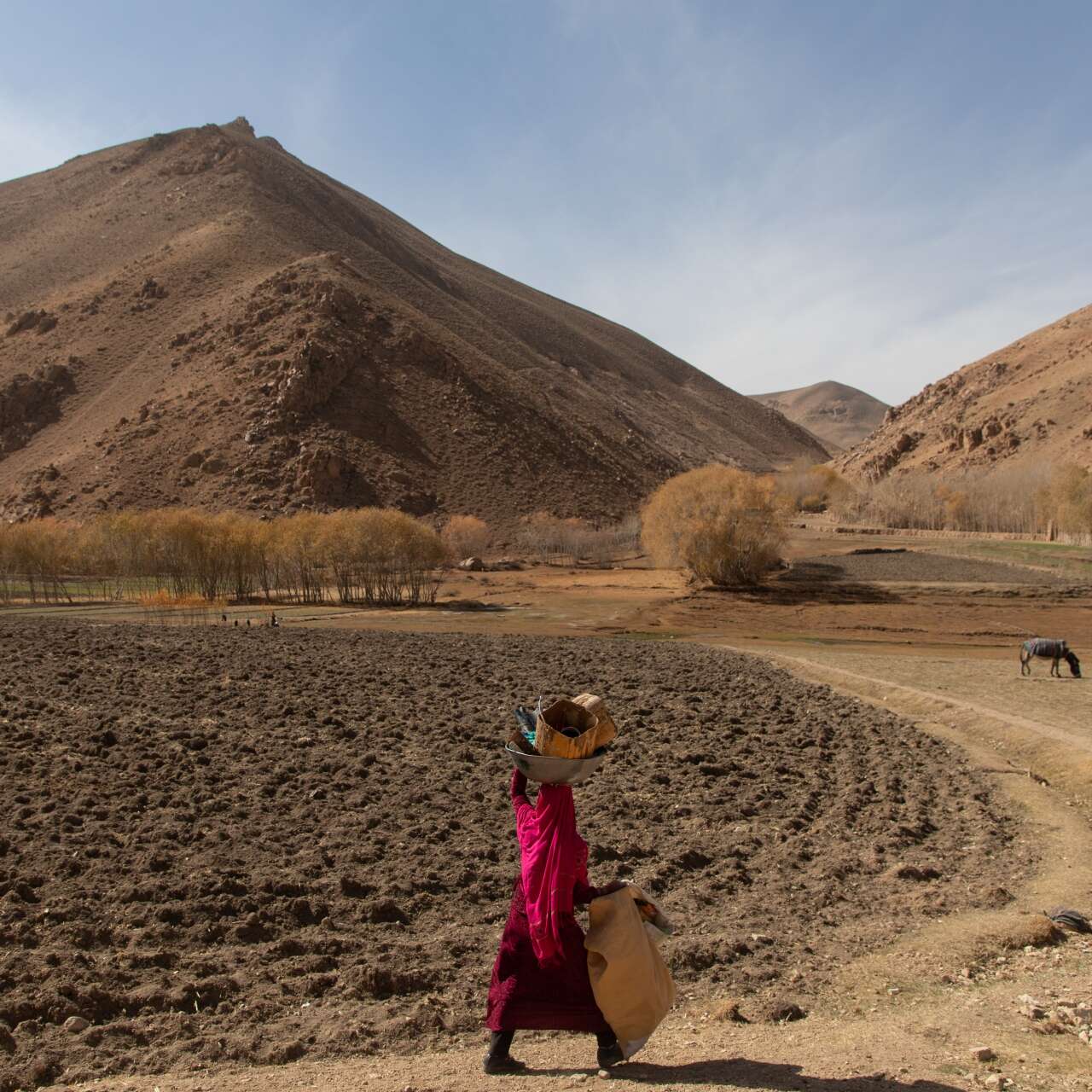
What are heat waves and who do they impact?
Around the world, climate change is accelerating life-threatening heat waves. Some communities lack the resources needed to stay safe.

Around the world, climate change is accelerating life-threatening heat waves. Some communities lack the resources needed to stay safe.
As global temperatures continue to rise, heat waves are becoming more frequent and severe.
Worldwide, communities that face conflict and crisis are hit hardest—with nearly 500,000 heat-related deaths each year. The impacts of heat waves are not just limited to physical health, they also have far-reaching consequences on food availability, water resources and overall livelihoods. As we continue to experience record-breaking temperatures year after year, heat waves are becoming the "new normal" and exacerbating global humanitarian needs.
Discover how climate change is intensifying the risk of heat waves and see what the International Rescue Committee (IRC) is doing to help.
A heat wave is a period of abnormally high temperatures lasting two days or more. These extreme conditions can have detrimental effects on infrastructure, agriculture and essential services. They can pose serious risks, particularly to vulnerable communities lacking the means to shield themselves from the intense heat.
As climate change accelerates, the number of people affected by heat waves each year is expected to rise.
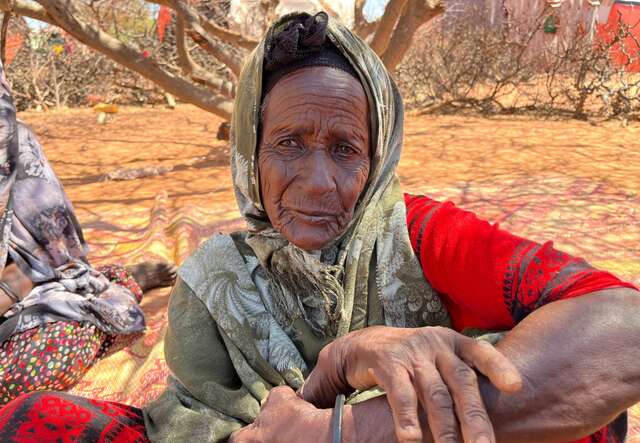
Yes. Climate change is exacerbating the intensity and frequency of heat waves globally. The record for Earth’s warmest day was broken on July 22, 2024. The very next day, a new record was set.
Over the past 60 years, heat waves have become more frequent and intense, and are lasting longer. The trend is expected to continue if we do not take immediate action to reduce our carbon emissions and mitigate the effects of climate change.
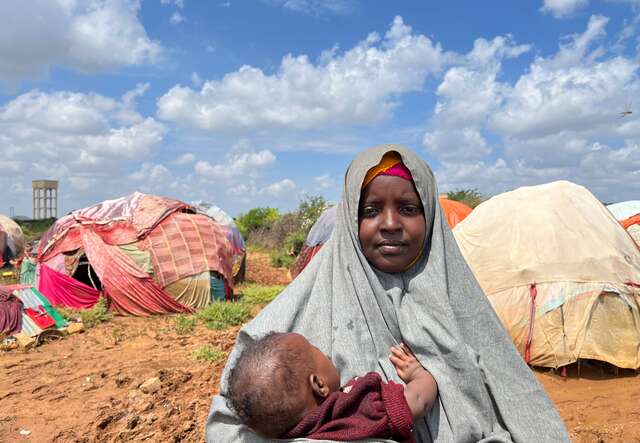
From California to New York, heat waves have been scorching the country, affecting more than 100 million people. Staying safe during a heat wave is a socioeconomic challenge—families with limited resources and those unable to access safe housing or cooling centers face higher risk of heated-related injury and even death.
Despite the recent improvements in infrastructure, extreme weather conditions continue to test the resilience of many communities. Power outages have also struck amidst heat waves, presenting challenges to those who rely on air conditioning or fans to cool down, compromising food storage and safety, and disrupting essential services and infrastructure.
Overall, more than 14,000 people in the U.S. have died from heat-related causes since 1979.
Some regions of the world are more impacted by climate change than others. This includes Africa’s Sahel region, where temperatures are rising 1.5 times faster than other parts of the world. In the Central Sahel (Burkina Faso, Mali and Niger), 7.5 million people are affected by severe food insecurity and malnutrition—2.1 million more than the year before.
Countries disproportionately impacted by climate change and escalating heat waves have historically made the smallest contributions in greenhouse gas emissions.
Heat waves accelerate pre-existing crises, ultimately deepening humanitarian needs.
In any country affected by a heat wave, vulnerable groups who lack access to housing, safe water and cooling centers are most impacted. In some contexts, vulnerable groups face the compounded effects of multiple crises at once. For example, in Bangladesh, communities living in poverty are not only facing the effects of heat waves but also struggling with food insecurity and displacement due to environmental disasters.
Heat waves also have a pronounced effect on farming and herding—livelihoods which many crisis-affected communities rely on. Extreme heat can kill crops and animals, preventing families in the agricultural industry from bringing their produce to market. When shortages occur and food prices increase, those with less resources are more likely to go hungry.
It is crucial for countries to take urgent action to address climate change and its impact on vulnerable populations. This includes implementing policies that reduce carbon emissions and investing in adaptation measures that can help lessen the effects of extreme weather events. Additionally, developed countries have a responsibility to support developing nations in their efforts to combat climate change through financial assistance and technology transfer.
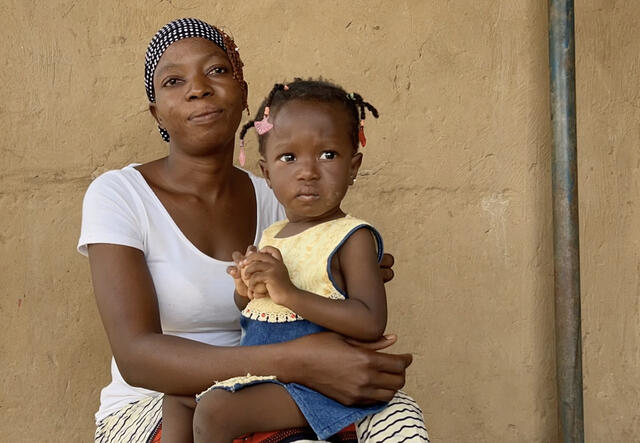
Women and children bear a heavy burden from climate change and food insecurity. Scarce food resources often mean they eat less frequently and with less nutritional quality. When food crises hit, young children are the most at risk.
Speaking on the impacts of climate change on children, Modou Diaw, IRC regional vice president for West Africa says, “We are extremely concerned about the rising levels of hunger and unacceptably high malnutrition levels in children under five: in parts of Mali, Burkina Faso, Niger and Nigeria, acute malnutrition rates are expected to reach critical levels of over 15% during the imminent lean season—this is more than one in six children!”
As the impacts of climate change intensify, leading to rising sea levels, extreme weather events and loss of arable land, more and more people are being forced to leave their homes in search of food and water, work and safety. These displaced individuals often encounter numerous challenges in accessing essential resources such as food, shelter and basic services. Displaced women and girls face increased risks of gender-based violence, including domestic abuse and human trafficking, underscoring the urgent need for tailored support and protection mechanisms to ensure their safety and well-being.
“Climatic shocks exacerbate food insecurity, malnutrition and insecurity, and push youth, men and women, to migrate both within and out of the region,” adds Diaw.
Learn how climate change and conflict are driving crises in the Sahel.
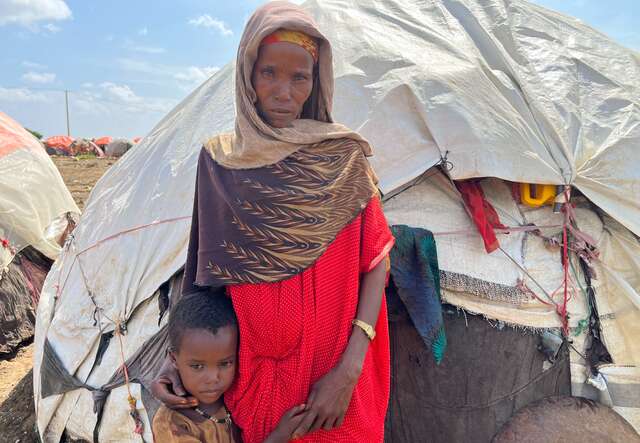
In June 2024, Pakistan’s government issued nationwide warnings about severe heat waves projected to affect 26 of the country’s districts. Pakistan’s extreme heat illustrates how heat waves compound existing crises, posing great threats to vulnerable populations.
In the past two years, drought and extreme flooding have ravaged Pakistan's agricultural lands, leading to skyrocketing food prices and making it near impossible for many to feed their families. The IRC warned that the heat wave would further exacerbate food insecurity for the 8.6 million people in Pakistan who were already experiencing hunger.
In response, the IRC is scaling up our response in Pakistan. We have mobilized our emergency response teams to provide immediate relief and support, including health services, protection, cash assistance, water and sanitation support, and emergency supplies.
“Despite generating less than 1% of the world’s greenhouse gas emissions, Pakistan is bearing the brunt of climate change with the most devastating consequences,” says Shabnam Baloch, IRC Pakistan Director.
“17% of households reported that their household income decreased by over a third during hot months. As a result, we are seeing an increase in families turning to extreme methods of survival, including resorting to child labor and child marriage in order to secure an income.”
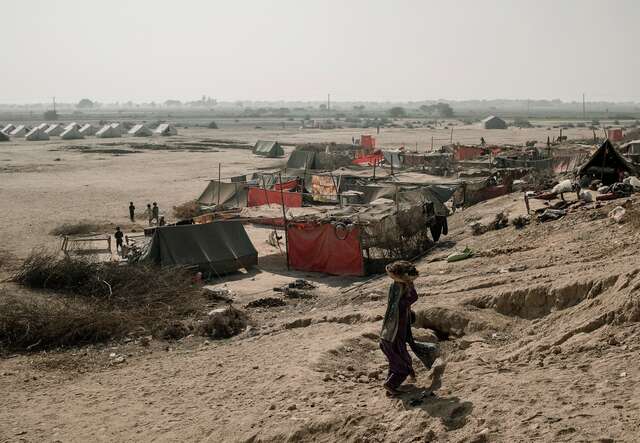
Heat waves impact all aspects of life. Many communities in Pakistan’s Sindh and Balochistan provinces—those also hardest hit by heatwaves and floods—are reporting disruption to children’s schooling as a result of school closures. It would not be the first time climate shocks have disrupted learning in Pakistan.
A recent IRC report showed that the shock felt by Pakistan’s education system in the wake of the July 2022 floods was greater than that caused by two years of school closures during the COVID-19 pandemic.
Since March 2020, 2 million children across Pakistan have been unable to access education, while 3.5 million are continuing to face interruptions in their schooling.
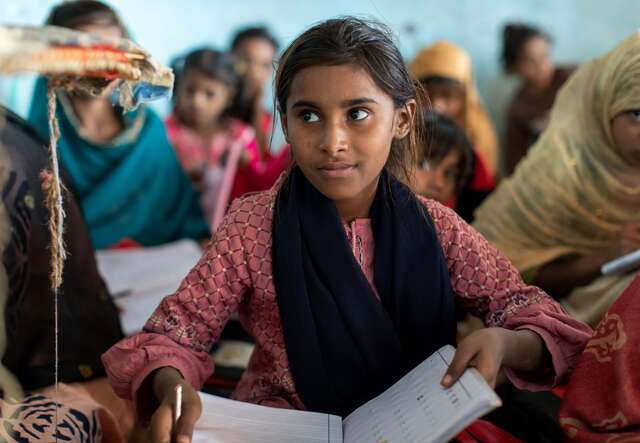
The IRC is hard at work in climate-vulnerable countries around the world. Our teams understand the unique needs of people in these settings and are focused on delivering effective responses in the areas of climate adaptation, climate resilience and crisis response.
The IRC responds to local crises, while strengthening community’s resilience and capacity to adapt to a changing climate. Our work includes anticipatory action to climate hazards, supporting community-led natural resource management and water conservation, and training people in sustainable livelihoods—all while putting the needs of women and girls at the center of our work.
Learn more about how the IRC is leading climate resilience and adaptation efforts around the world.
The IRC is working to deliver life-saving services in more than 40 crisis-affected countries around the world, including those affected by the global climate crisis and worsening heat waves.
Donate today to support our cause and follow our Instagram and LinkedIn to stay informed.